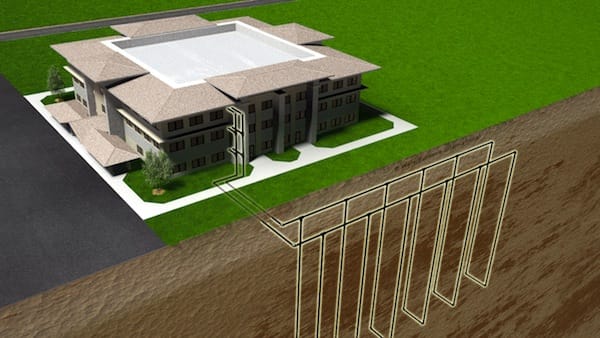After we’ve finally reached the point of “Peak Oil,” global petroleum production may no longer meet demand. In the meantime, the burning of fossil fuels releases the greenhouse gases responsible for global warming into the atmosphere. It is therefore critical to switch to renewable sources of energy. Geothermal is one such source, and its popularity has been increasing in recent years—but are we training enough technicians to service the eco-friendly systems that utilize it?
Background of Geothermal Energy
Geothermal energy taps the naturally produced heat of the Earth, which is virtually unlimited. The Geothermal Energy Association estimates that the heat coming from the interior of the Earth is equivalent to over 40 million megawatts of electricity. This energy supply is stable and will last for billions of years. RSI notes that in 2009, geothermal energy made up only 1% of global energy needs, yet the expectation is that this number will increase to between 10% and 20% by 2050.
Geothermal Energy Power Plants
The Annual U.S. & Global Geothermal Power Production Report by the Geothermal Energy Association notes that the total amount of geothermal power plant electricity generated in the United States during 2013 was 3,442 megawatts. The states with the most geothermal power plant installations are California, Nevada, and Utah. Over 50% of the geothermal energy potential in those states remains available for utilization.
Geothermal Use Heat Pump Systems
When most people think of geothermal energy, they naturally assume it requires hot springs, geysers, or underground reservoirs of hot water to use for running turbines that create electricity. This is true for geothermal power plants. Nevertheless, there is also a terrific use of geothermal conditions that can be tapped anywhere, using heat pumps.
Just below the “frost line,” about ten feet below the surface, the temperature of the Earth stays constant in the range of between 45°F to 75°F. The ground is warmer than the air above it during winter and cooler during summer. This works all over the world, even in the hottest deserts or the coldest areas, though systems in some areas will be more effective than in others. Heat pump systems use ground heat exchangers to transfer heat into the home in the cold months and out of it during the warm ones, resulting in energy efficiency in the range of 300% to 600%.
Energy.gov offers this video that shows how heat pump systems work with the stable temperatures of the Earth to provide a reliable, clean source of energy for heating and cooling homes.
Geothermal Job Prospects
A May 2014 report by the International Renewable Energy Agency indicated that the geothermal industry supported 35,000 direct and indirect American jobs from 2012 to 2013. According to the Geothermal Energy Association, people directly employed by the geothermal energy sector include welders, pipe fitters, electricians, and HVAC technicians.
The Bureau of Labor Statistics reported that during 2012, there were 130 new geothermal projects installed in fifteen states, most of them in the western United States. As this technology is further developed and becomes more cost effective, the BLS notes that this sector could experience job growth. Moreover, the Natural Resources Defense Council notes that the near-term development of 5,600 megawatts of geothermal energy would create nearly 100,000 jobs.
As with other emerging renewable energy technologies like solar, it will likely be necessary to train more men and women to install, maintenance, and repair commercial and residential geothermal systems to meet future demand.
Monica Gomez is freelance writer, pursuing a bachelor’s degree in journalism at Cal State Long Beach. Subjects covered include healthcare, career, environmental sustainability, welding, HVAC and manufacturing. She can be reached at gomezmonica53@gmail.com.





Join the conversation: